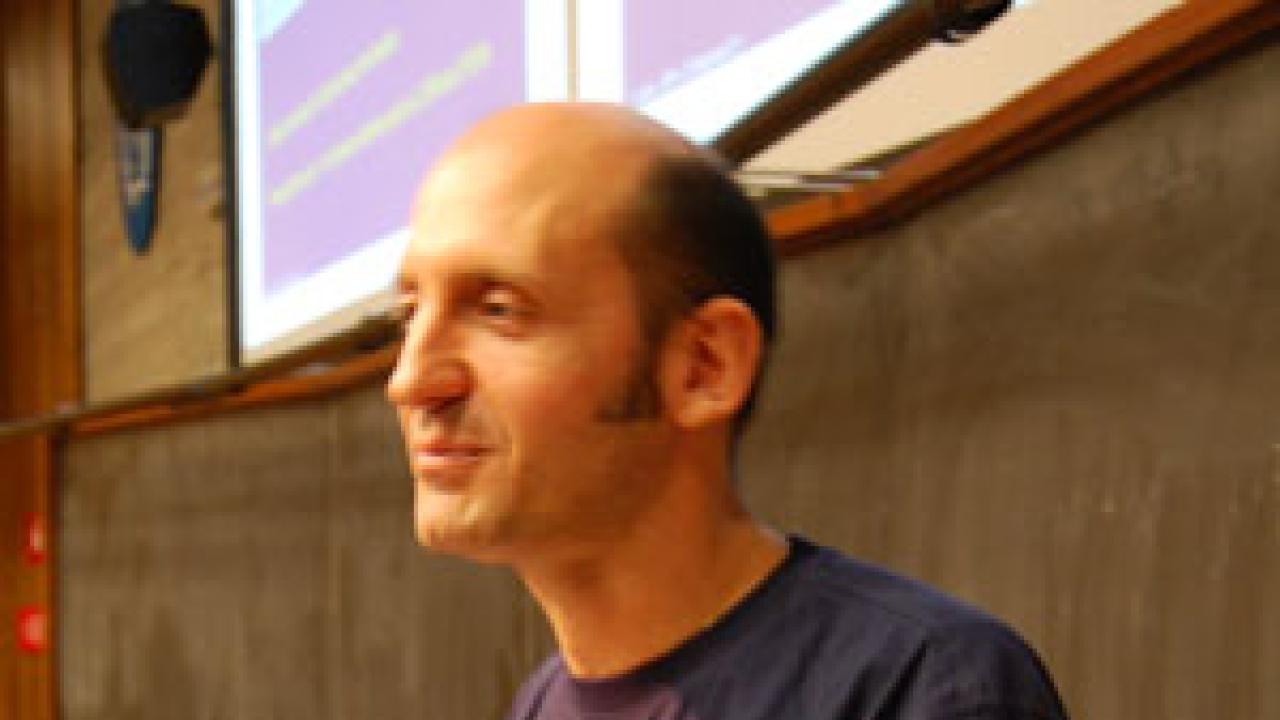
Alessandro Bertolin (INFN, Padova), a member of the team that is working to measure the velocity and oscillations of neutrinos generated at a particle accelerator (Super Proton Synchrotron) in CERN, presented the findings of the paper "Measurement of the neutrino velocity with the OPERA detector in the CNGS beam" at ICTP on 28 September 2011.
The project, CERN Neutrinos to Gran Sasso (CNGS), aims to decipher the nature and behaviour of neutrinos, which are elementary subatomic particles that carry no charge, have negligible mass, and interact very little with matter (which means they pass through matter as though it did not exist).
In 1962, scientists discovered that there exists more than one type of neutrino. As of now, physicists have detected the existence of three types (or flavours) of neutrinos: electron, muon and tau. They have also detected a curious behaviour of neutrinos: that of changing from one flavour to another (termed by physicists as oscillations).
The primary goal of the OPERA experiment at Gran Sasso National Laboratory in Italy is to detect if any of the muon neutrinos produced at the CERN particle accelerator changes to tau neutrinos. Another aspect of the experiment is to measure the velocity of these elementary particles.
This measured velocity is what has recently grabbed headlines: the team discovered neutrinos arriving from Super Proton Synchrotron at CERN to the OPERA detector at velocities that appear to be faster than the speed of light in vacuum, 60.7 nanoseconds faster.
Bertolin, at the talk, said that the team had put in painstaking effort with the time and distance measurements to determine neutrino velocity. The OPERA team has not drawn any definitive conclusions from this apparently anomalous observation, and Bertolin stressed that the team decided to publish the surprising findings so that the physics community can go ahead and do a thorough check of these results.
A video footage of the complete talk and following discussion will be available soon on ICTP's YouTube channel.
















